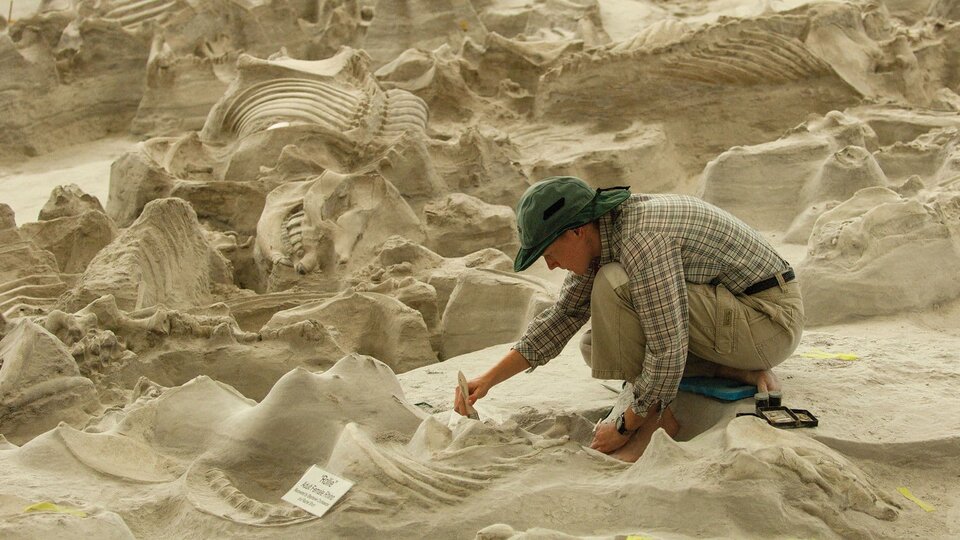Your first stop should be the interpretive displays and the fossil preparation laboratory. You are invited to ask the paleontologists about their work. Educational programs are presented on a regular basis. From the Visitor Center, it is but a short stroll to the Hubbard Rhino Barn, where new discoveries continue to be unearthed.
Ashfall is situated on 360 acres of rugged rangeland in the scenic Verdigre Creek valley. Nature trails were developed to help interpret the geology as well as the flora and fauna of the area. Picnicking is permitted on the park, and campers can use nearby Grove Lake Wildlife Management Area near Royal.
Collecting fossils or other specimens on the park grounds is strictly prohibited. (If every visitor took a "souvenir," one of Nebraska's natural historic treasures would be gone forever.) Preservation of Ashfall now and for future generations is made possible by the generosity of the Nebraska Game and Parks Foundation, which purchased the land in 1986, and the Burlington Northern Foundation, which supplied a grant for construction of facilities.
Paleontologists and interpretive staff at the site are provided by the University of Nebraska State Museum.
Historical Overview
Ashfall Fossil Beds is located in gently rolling farmland near Royal, Nebraska. Fossils were first reported in the area in the 1920s, including a partial rhino skull found beneath an ash layer in 1953. However, the site's true significance wasn’t recognized until 1971, when paleontologist Michael Voorhies discovered a baby rhino skeleton exposed by heavy rains. Excavations in the late 1970s unearthed over 120 articulated skeletons.
In 1986, the Nebraska Game and Parks Foundation purchased the site, leading to the establishment of Ashfall Fossil Beds State Historical Park in 1991. Managed by the University of Nebraska State Museum, the park is open to visitors from early May through early October. In 2006, the fossil site was designated a National Natural Landmark for its exceptional paleontological resources.
In 2009, the Hubbard Rhino Barn, a 17,500-square-foot structure, was opened to protect and showcase in-situ fossils. Visitors can observe skeletons preserved in volcanic ash and watch paleontologists actively excavating, preparing, and conserving fossils. Research continues, and the full extent of the ancient waterhole—and the fossils it holds—remains unknown.
The National Natural Landmark (NNL) Program, managed by the National Park Service, recognizes outstanding biological and geological sites across the U.S. Ashfall is one of 59 NNLs designated primarily for their fossil resources, which span from 510-million-year-old marine life to Ice Age mammals from 40,000 years ago. NNLs are recognized by the Secretary of the Interior and may be owned by public or private entities.


